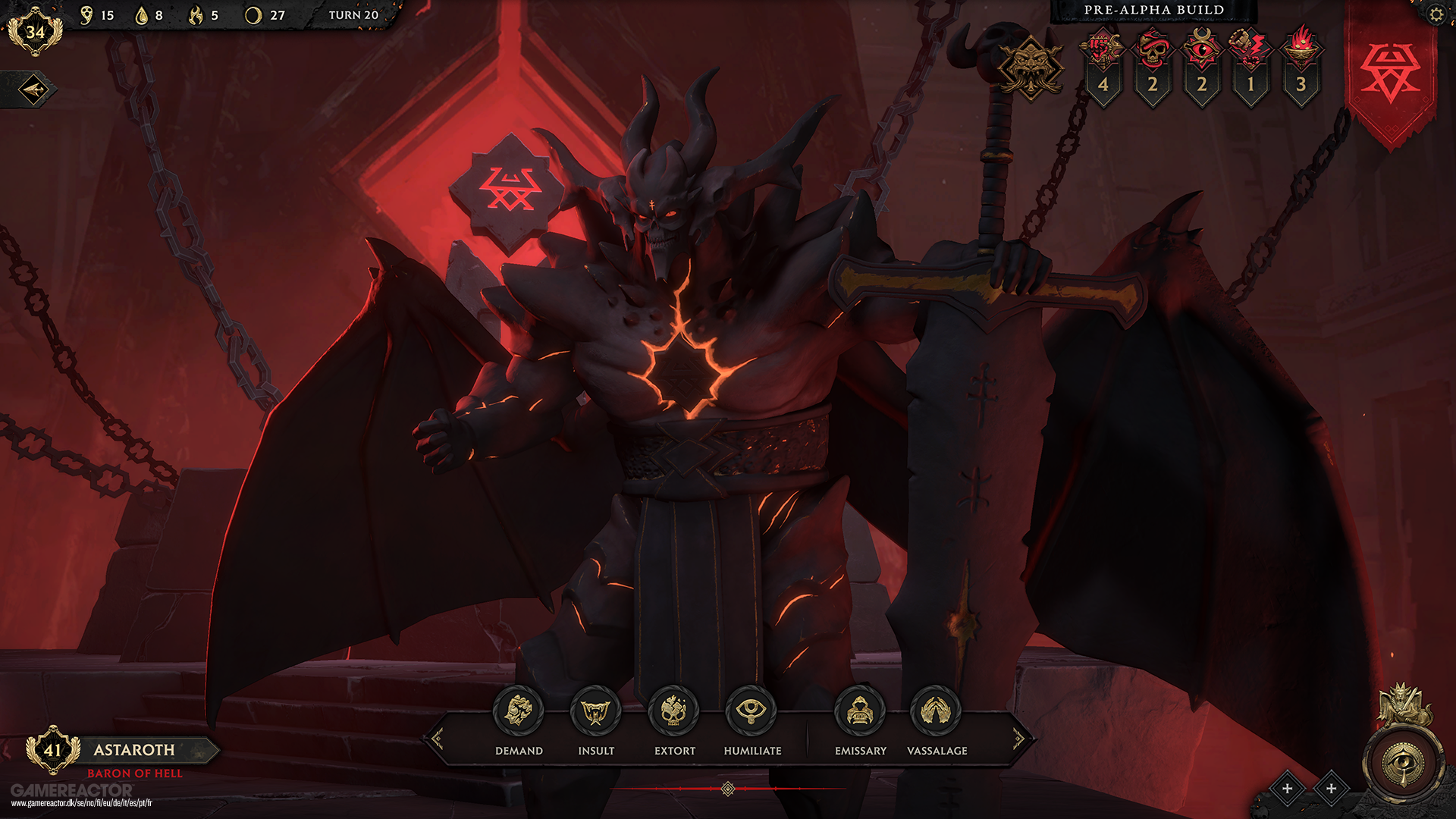Everyone has their own idea of what hell is like. I’m not referring to your concept of eternal punishment, but to the place itself. Personally, I’ve always liked the Nine Hells described in Dungeons and Dragons. Each demon lord controls his own kingdom and plays an eternal 4D chess game against his fellow demons in a desperate, never-ending attempt to gain power over a frankly uninviting realm full of screaming souls and barren wastelands.
Solium Infernum represents a similar version of Hell, where the devil himself has disappeared, so the eight archdemons immediately argue and argue over who should take his place on the throne of Pandaemonium. Solium Infernum has a great and intriguing premise that draws you in from the start and lets you know that this grand strategy has a unique style and personality that is hard to find in other games.
Everything in Solium Infernum exudes charisma from all sides. From the Lords of Hell, brilliantly modeled and characterized, to the plains of Hell itself. When you see this gray landscape full of terrible creatures and places like the Suicide Forest, you wonder why anyone is fighting for power in this place . Then another archdemon demands that you make a payment of three coins into their coffers, and you’re willing to die just to make sure they don’t win.
Advertising:
Although your main goal in Solium Infernum is to claim Pandemonium, there are many ways to achieve this and many mechanics that take you from a humble baron to the ruler of Hell. You can even win the game by putting someone else on the throne, as long as your strategy is right and they end up being your puppet. To reach this end point, however, you must build a treasury, find legions, and equip them with praetors and artifacts to make them stronger. You’ll also have to perform rituals, engage in diplomacy, and upgrade your own Archdemon – all while finding the time to do it in just two shifts.
When you first get into Solium Infernum it can be a little overwhelming, and even after playing through the tutorial several times, there are some pros and cons that are best learned by just diving into it. While it may seem like the focus in this big game full of backstabbing and treachery is asynchronous multiplayer and ending friendships, there’s a pleasantly surprising amount to do in single-player mode. Playing as each of the archdemons and exploring the different scenarios was a blast, and while the AI can’t keep up with the levels of a strategic player, I ended up spending a lot more time in the single player mode than I had originally planned always lie to myself. I thought that the next round would be the last.
What helps Solium Infernum stand out while still being highly accessible is this focus on the two moves you make in a round. It’s a real case of chess versus checkers, where you’re not able to do everything you want in one turn, but have to think three to five turns in advance, living in fear that someone takes away what you wanted. You can unlock another command late in the game, but then you risk losing valuable prestige. At first it may seem strange or even frustrating to have to go through several rounds without moving troops because you need to fill your coffers or auction a powerful praetor, but once you get used to it, it actually works quite well and is handy when you’re in the Multiplayer mode is.
Advertising:
Unfortunately, I didn’t have much time to play Solium Infernum’s multiplayer mode, but I’ll repeat what I wrote in my previous impressions. Getting a group together to play an entire game of Civilization or something similar can be a real nightmare. Ironically, Solium Infernum’s multiplayer is a blessing. Since you can only make two moves per turn and Solium Infernum consists of grand plans that are implemented over the course of a game, asynchronous multiplayer is a truly innovative way to address the shortcomings of online strategy. Of course, it builds on the original game’s work, but instead of emailing your saves now, you can simply set up a Steam notification every time it’s your turn, and you can even have days to to complete it. Of course, there is the option to play a game in a few hours if you want, or switch to asynchronous play halfway through the game. It’s very well thought out and allows Solium Infernum to be more than just a very entertaining single player experience, as most strategy games result in your friends never managing to organize a session.
Because of its systems, the game seems to play like other grand strategy franchises. You move units to capture territory, fight against neutral powerhouses, and accumulate resources. But you can’t make the world your own and declare war whenever you want. You need a reason for it. I was skeptical at first, wondering how it would work and whether it wouldn’t allow people to essentially play a single-player settlement simulator while avoiding all conflict. But when you play Solium Infernum, you’ll find that it’s pretty easy to get caught up in a vendetta. An insult is rejected, a demand is not met, there are many reasons for entering a rival’s land and treading in the dirt. But since every vendetta has a victory condition, you might also want to think about how you wage your war. It’s not always about a fortress, and the longer you drag out a war, the more likely it is that someone will take the opportunity to attack you from behind. I couldn’t really go into the depth that’s possible in a grand political strategy without writing thousands of additional words. It’s impressive and shows once again how much time you can easily squeeze out with Solium Infernum. If I had to highlight something, it would be that some parts of the game can apparently be ignored, even when playing with an Archdemon that specializes in them. Making a unit very strong and roaming the map like an unstoppable force worked for me, regardless of who I was playing against. So I hope that over time multiplayer will show me how wrong this strategy is.
Playing Solium Infernum is even more fun thanks to the incredible illustrations and sounds. The graphics of units, praetors, artifacts, events, and more are striking, dark, and make me want a full artbook for this game. The soundtrack is also brilliant and the orchestral sound effects that appear when you do something immerse you in the depths of hell in the best possible way. Not only are the still images impressive, the animations are also very solid for a strategy game. Great leviathans rise from the ground, tiny troops march across the plains of hell, engaging in simple but very entertaining battles. I don’t think I missed a single battle in my time with Solium Infernum, but if you hate fun, feel free to skip these animations.
Equal parts beautiful and grotesque, as you’d expect from Inferno, full of depth and intricate mechanics worth learning, Solium Infernum is a wonderfully evil addition to the grand strategy sub-genre. It immediately catches the eye and is designed with a care that you can feel from the first few curves. It’s a lot of fun exploring the conflicting personalities of the Archdukes of Hell, and I can imagine I’ll be staying up late instinctively hitting the next turn button.









